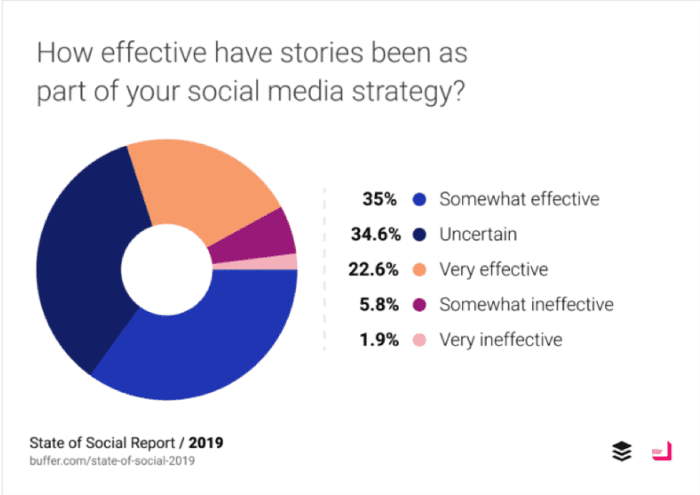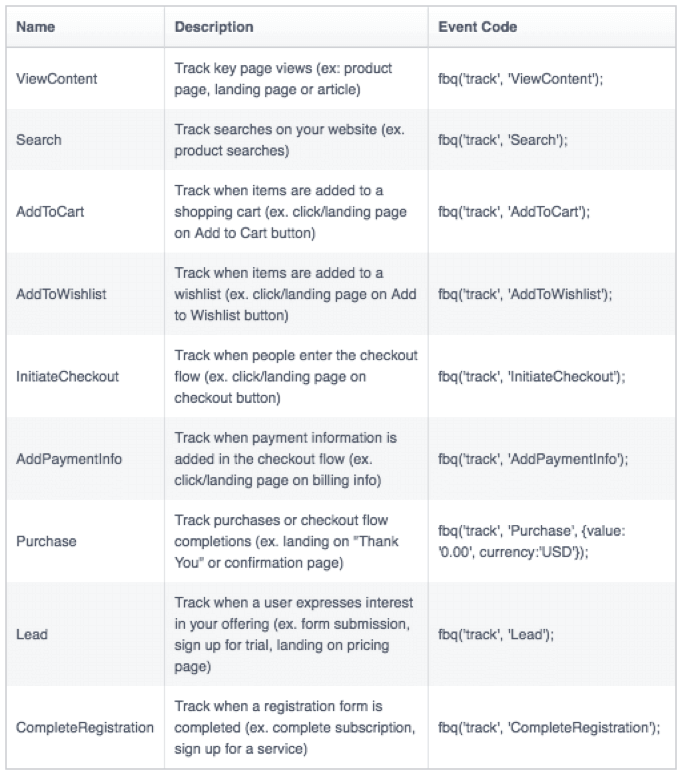If you aren’t following social media marketing best practices, it’s difficult to get results.
Today, every serious business – across industries – uses social media.
But how many of them can boast of actually achieving their social media goals?
Sadly, a lot of businesses use social media because everyone else is using it. Because social media has become an absolute must-have. But without following social media marketing best practices, it’s difficult to get results.
For businesses that win on social media though, it can be rewarding. Unsurprisingly, 73% of marketers claim social media has been effective for their business.

That’s why in this blog post, I’ve put together a list of social media marketing best practices you need to implement on your social media pages and for your campaigns.
But before we go into that, let’s look at productivity hacks that can help you manage your social media effectively:
Productivity tips on social media
Overuse of social media can sap your time and energy. Even with that, you may have a poor result to show for your effort. Here are some useful tips to help you become more productive on social media:
Always start with a social media strategy
There are so many aspects of social media you have to get right. But without a social media strategy, you simply have no chance. Posting haphazardly, when you have some free time or inspiration hits you, won’t get you very far.
A strategy helps you to think and plan how your social media activities will be effective. It allows you to create a strategy that focuses on your business and marketing. Of course, it also helps you keep track of your social media ROI (return on investment) and overall results.
To create an effective social media strategy, you need to consider the following points:
- Put down your goals for social media marketing.
- Create a plan to achieve these goals.
- Select your social media channels.
- Create a social media content calendar.
- Select your social media tools.
- Specify the time for social media activities.
- Put a system in place to track results.
By going through all of these essential steps, you will have a solid social media strategy in place that will help you be more productive with your time, while also having a massive potential impact on your results.
Use the right tools
Tools are created to make your life easier and better. When it comes to social media, tools are an absolute must. Only by using tools every step of the way, from creating content to managing your social media, can you be effective with your time and also get good results.
With the right social media tools, you can carry out social media activities like:
- Social media scheduling
- Social media engagement
- Get statistics
- Content creation
- Content curation
- Monitoring brand and industry mentions
- Create reports
In some cases, you’ll find tools that can perform most of these functions. Some of them can also help to improve collaboration between your team members. Now, you have to understand that the tools you go for will depend on your unique needs.
Some factors that affect your choice are:
- Social media goals
- Social media needs
- Number of team members
- Budget
Getting the right tools can save you a lot of money and time. Furthermore, it will boost your productivity and results on social media. The most important tool you need to have? It’s definitely a social media management tool. But, as there are so many different choices out there, you can check out this detailed guide on how to pick the right social media management tool for your business to help you.
Focus on the right channels for your business
You can save more time, energy, and get better results when you focus on a few social media networks. This could be platforms where your potential customers are active.
Another way to select platforms is to analyze your social media results. Which channels bring the best return on investment (ROI) for your business? Where do you think the biggest and most engaged audiences are?
Organize your tasks
You can spend all day on social media but that’s no guarantee of better social media performance.
A HubSpot study found that marketers spend over three hours on routine social media tasks every week. When you organize your social media tasks, you end up spending less time and achieving better productivity.

Here are some ways to organize your social media tasks:
- Create a checklist of social media activities to do daily.
- Batch these tasks together and leave time to do them at once.
- Automate repetitive manual tasks that waste time.
- Assign social media tasks to team members or freelancers.
With these, you can improve your results and have time for other important activities.; i.e. creating content for social media and engaging in real-time with your audience.
Social media marketing best practices
What practices can help you get the best out of your social media campaigns? Here are some you should follow:
Research and understand your ideal audience
Trying to satisfy everyone on social media means you’ll satisfy no one. To create valuable content and satisfy your followers, it’s vital you know them.
When you carry out research on your ideal audience, it becomes easier to understand their pain points and messages they can resonate with. Some vital details you need to know about your ideal audience are:
- Age
- Location
- Income
- Ambitions
- Solutions they need from your business
- Relationship status
- Job
To capture these details effectively, you need tools that can help you out. A tool you can use is the Facebook Audience Insights that can provide more demographic information of your page followers.

Even better, use a social listening tool to help; this allows you to monitor all of your social media (along with other digital channels, for that matter) so that you can see exactly where your audience spends their time online, what their interests are, what topics they like to talk about and what social influencers they follow, amongst other information about your audience.
Share valuable content regularly on social media
Without daily content, it’s difficult to spark interactions with your audience. Plus, you’ll lose followers.
However, sharing content goes beyond the quantity alone. Sharing valuable content helps to build trust with your followers and even better engagement on your social media pages.
If you produce a low amount of content (if you simply don’t have the time or the resources to create too much content), content curation can come to the rescue. You can share valuable industry content from other sources and keep your audience satisfied by providing them with value.
Other forms of content that work well are quotes, blog posts, and promotional offers from your business. Furthermore, user-generated content is a popular form of content your audience will love.
Reply to complaints within a short period of time
Naturally, when customers have a complaint about your business, they share it on social media. If handled carelessly, you can have a PR disaster for your business within the blink of an eye.
A study by Lithium found that 53% of consumers expect a brand to respond to their tweet within an hour. That rises to 72% if they’re making a complaint.

If you run a business that attracts messages and complaints from your customers, the best you can do is have a customer support staff ready to provide prompt replies. How fast you reply could encourage (or discourage) a potential customer about your business. Of course, a powerful social media management tool that can monitor all mentions of your brand, so that you can catch them in time and respond promptly.
Apart from this, you should generally engage with your followers by replying to comments and resharing content.

Find opportunities through mentions
Not everyone will post their complaints on your social media page. Which makes you blind to most of these complaints.
For instance, Brandwatch found in a study that 96% of untagged brand mentions get no response.

What you need to solve this problem is social media monitoring. There are tools like Mention and Awario that help you find your brand mentions.
Generally, you can use social media monitoring to find opportunities in 3 ways:
- Monitor your brand mentions
- Monitor your competitors’ mentions
- Monitor industry mentions
Invest in paid advertising
Going fully organic on social media will put limits on the results you can get. With platforms like Facebook, whose algorithm is constantly changing, it’s even more difficult.
That’s why you have to invest in paid advertising. However, you need to be strategic about it to avoid throwing your money away.
While creating ads, you need to have a marketing objective. A platform like Facebook requests for this before you can advertise on their platform.

After this, you need to target the ideal audience who are likely to help you achieve your objectives. Each social media channel has targeting options you can use before your ads go live.
Perhaps, one of the biggest opportunities is remarketing ads. When people visit your website but fail to convert, you can send advertisements to them based on the pages they visit.

This makes them more likely to resonate with your ads and come back to your website since they’re already aware of your brand. Note that you’ll need to install tracking pixels on your website to be able to track your results.
Track your social media performance
How do you know your social media efforts are bringing in the right results? By tracking important metrics. Here are some metrics you need to track for your social media campaigns:
- Engagement statistics (likes, comments, and shares)
- Change in follower count
- Number of clicks
- Number of leads
- Number of conversions
- Return on investment (ROI)
You can track these metrics and compare them with your social media goals. This will help you determine the success (or failure) of your social media campaigns and help you measure your social media ROI.
Even more so, it will help you understand what works and what doesn’t – so that you can further improve your strategy on a regular basis.
Conclusion
Just like other marketing activities you engage in, social media requires its own set of best practices to get the results you desire.
Study these best practices and implement them in your social media campaigns – not only will they help you be more productive with your time, but they will also help you achieve your goals faster.
